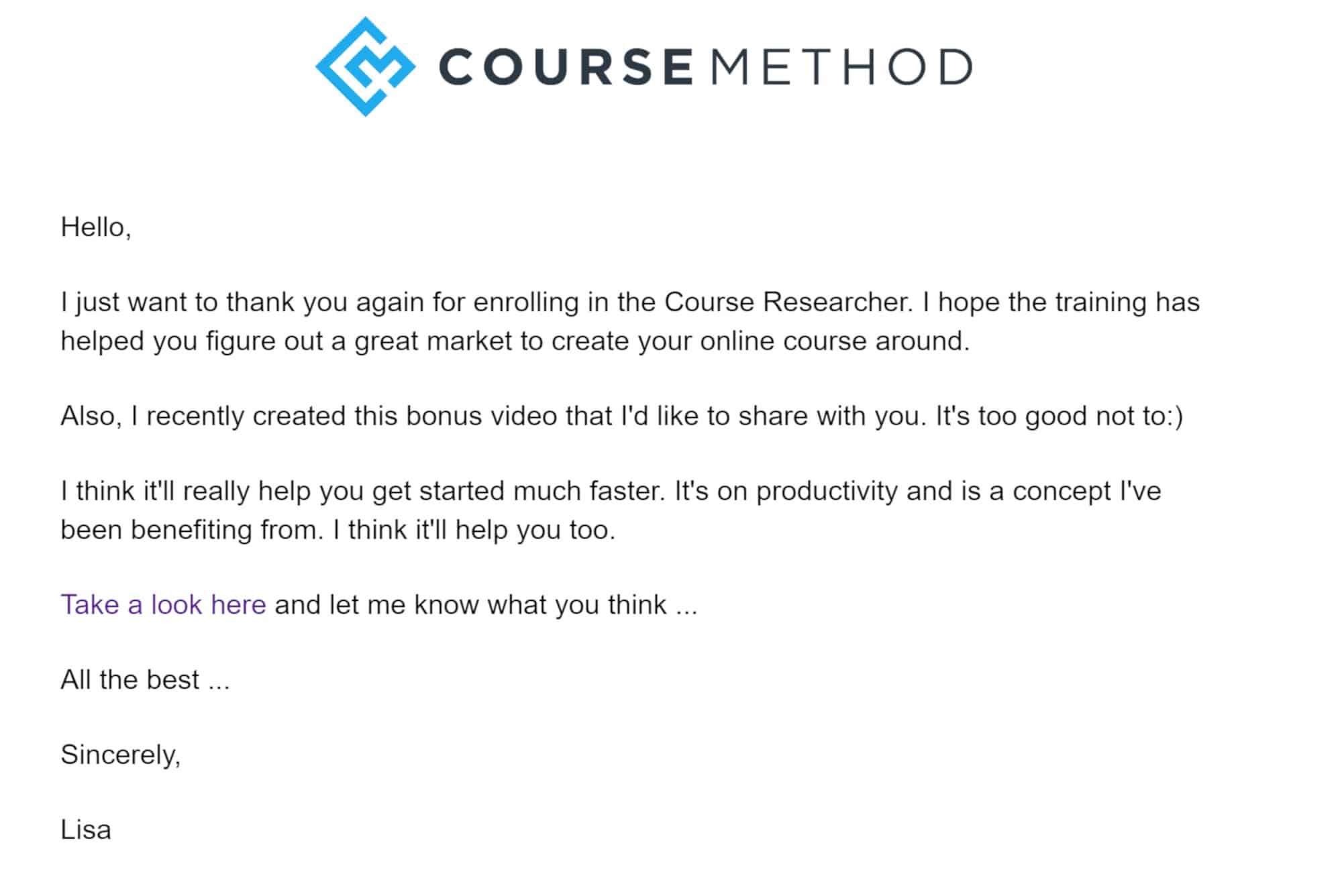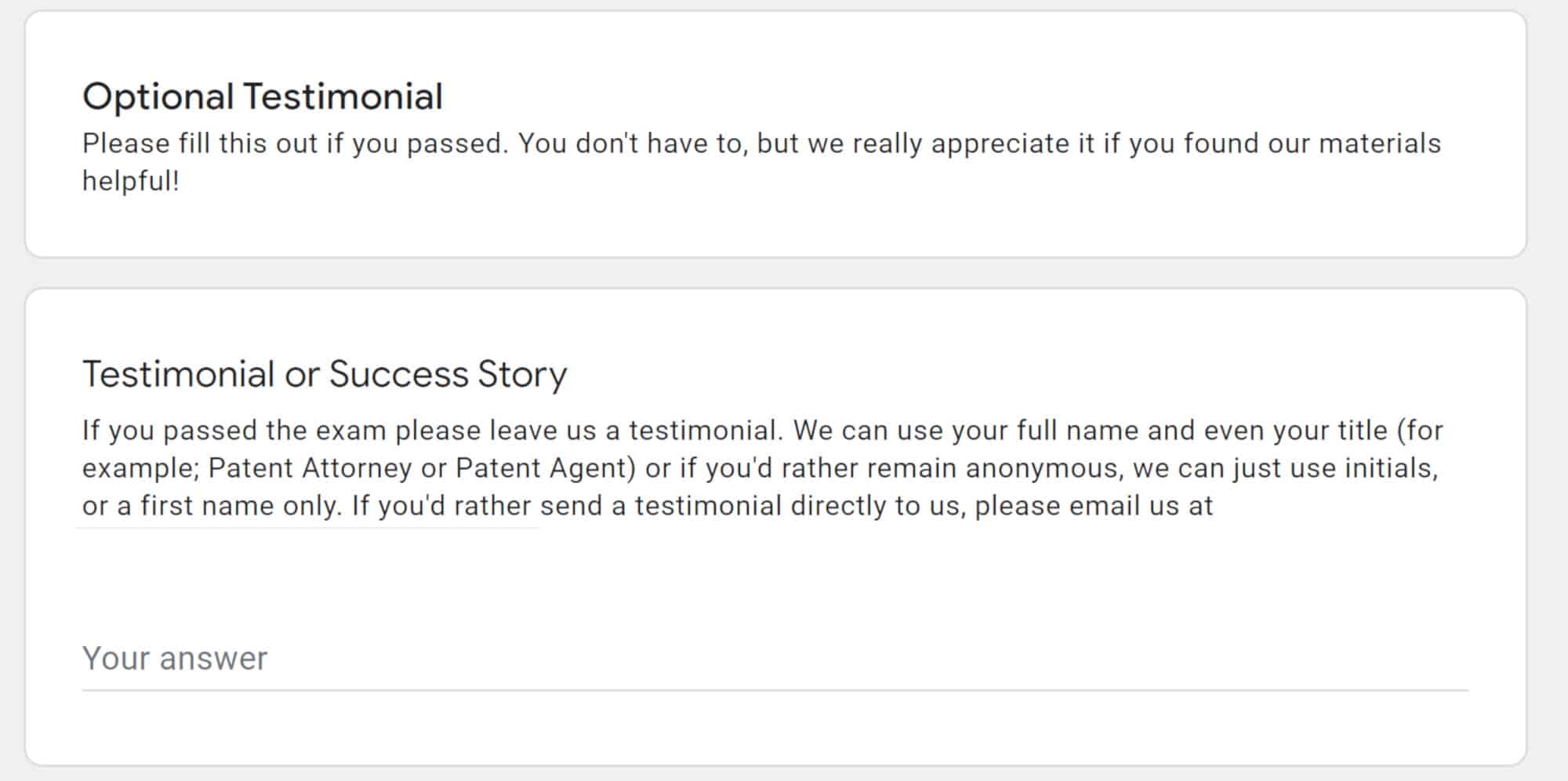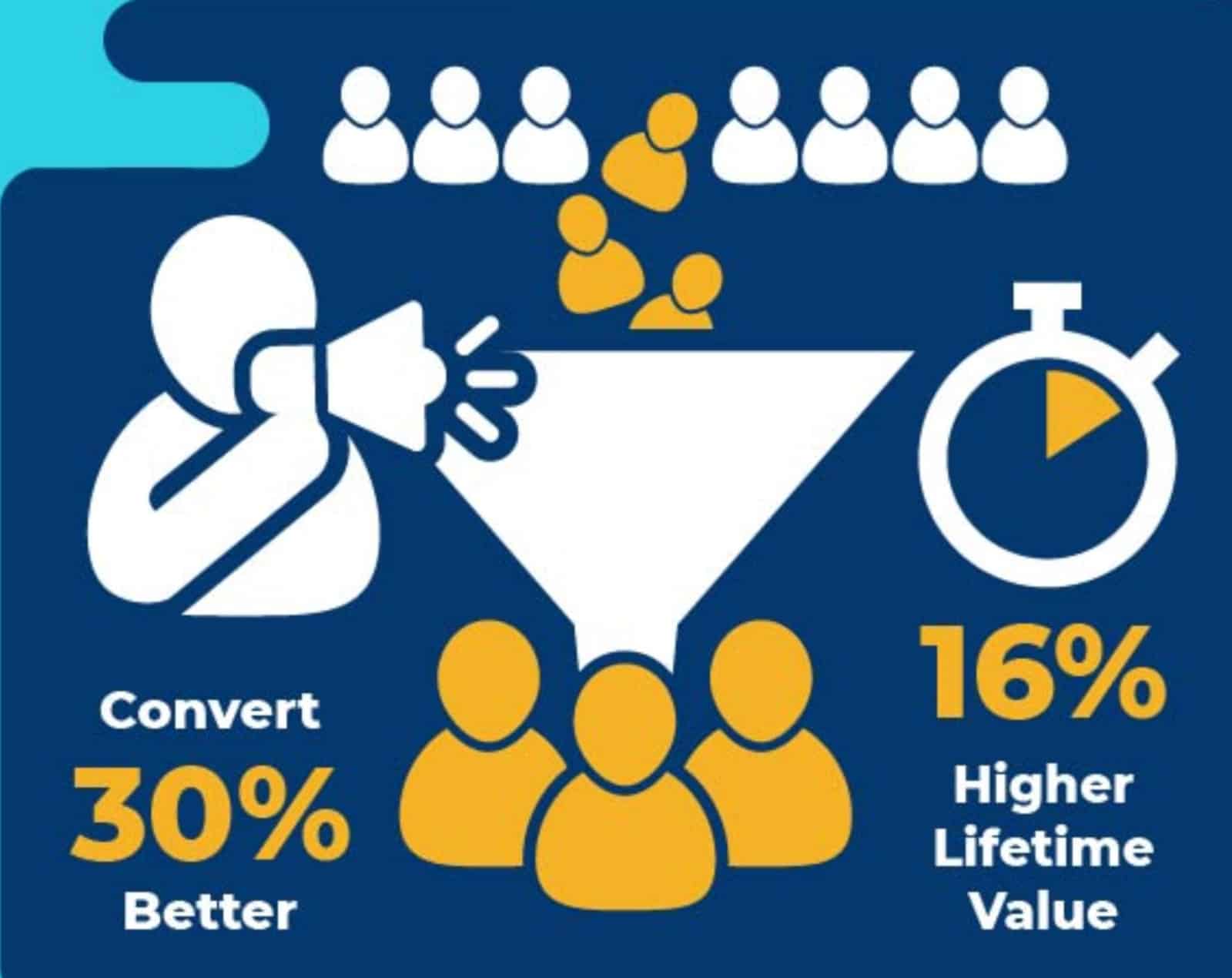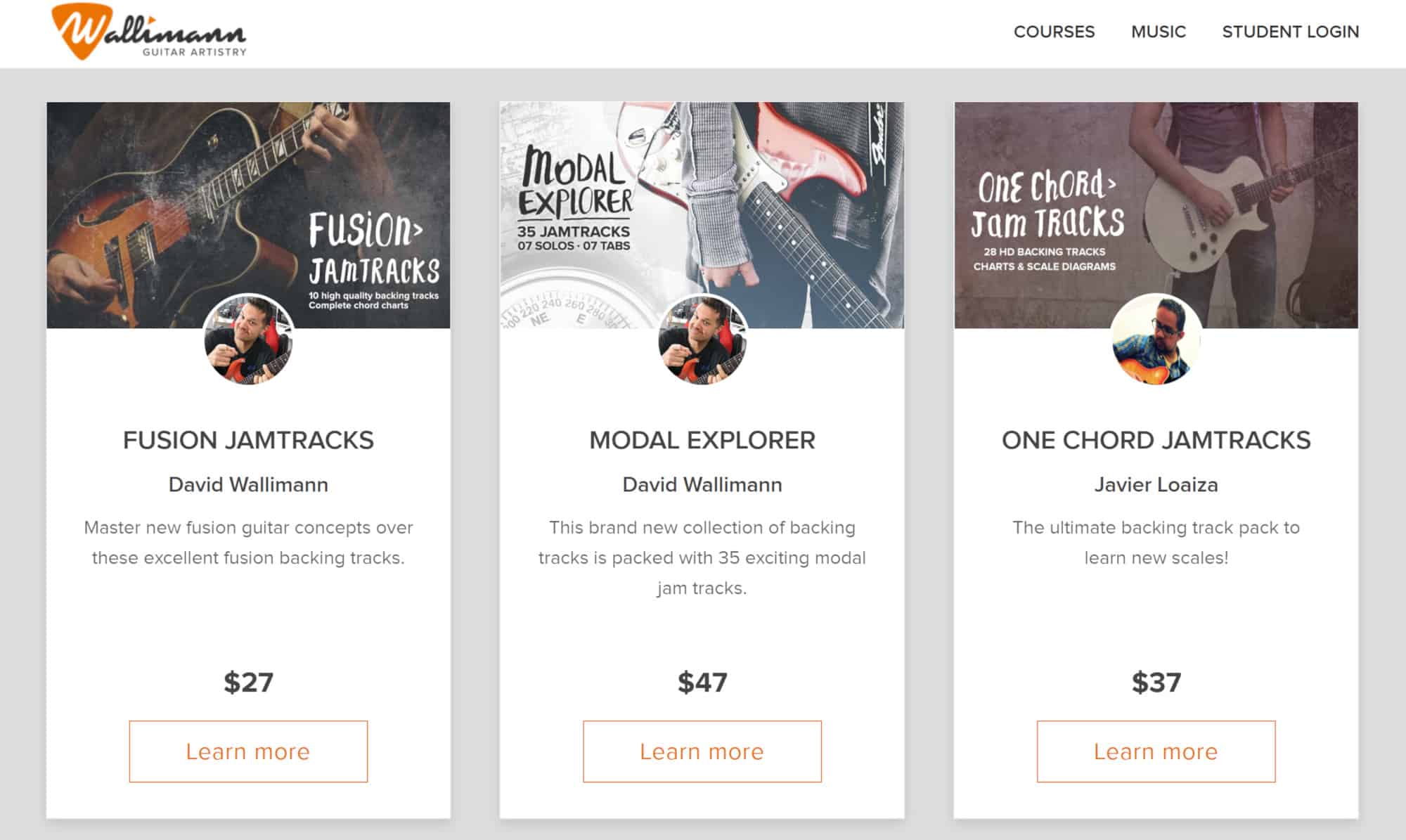Our content is reader supported, which means when you buy from links you click on, we may earn a commission.
7 Ways an Online Course Email Sequence Can Increase the Value of Your Training

Do you have an online course? Are you wondering how you can maximize its impact through the power of email marketing?
If so, then let’s take a look.
Email marketing works for every industry, and that’s true for online course creators too. It’s an even stronger channel for course marketers and digital trainers because it empowers them to demonstrate the value they add for their customers.
Of course, you need an email sequence to help walk an email subscriber from your sales page to your paid enrollment. This is a part of your sales funnel and targets each potential customer. But you’ll also want email sequences to help you increase your revenues as well as help you build trust and generate happy clients.
Consider the benefits of implementing an efficient email marketing campaign for your paid digital training products.
Here are seven different types of email sequences for course creators to use for their buyers to increase revenues and course completion rates:
1. Improve Your Onboarding Process
Onboarding isn’t just for software as a service (SaaS) businesses. Online courses can benefit from having an onboarding process too. Best practices in onboarding give new customers a glimpse into their expected customer experience. Anything short of an excellent journey results in more refund requests and hassles.
It’s good practice to follow what the leading apps and software programs do when they onboard new customers. That includes telling new customers how to handle all the necessary operations concerning their accounts. This includes information on how to change their passwords and initiate a support session. Onboarding also serves as an ideal way to walk customers through the course dashboard and other vital information.
Use your email marketing platform to set-up an onboarding sequence. This is an effective way to wow your customers immediately after they purchase your training courses. As shown in the image below, it can be as simple as connecting an email sequence to a purchase.
 Once the customer has completed their purchase, they immediately and automatically get emails set on timers that walk them through onboarding and the basics of the course. The first part will consist of a welcome email sequence. You’ll acquaint learners with your course from there.
Once the customer has completed their purchase, they immediately and automatically get emails set on timers that walk them through onboarding and the basics of the course. The first part will consist of a welcome email sequence. You’ll acquaint learners with your course from there.
2. Use Email to Help Learners Through Your Course
One benefit of emailing customers is to encourage them to stick with the course until the end. Use a series of emails to walk them through pain points to ensure they complete each task.
You may even want to install a third-party tool like Zapier to integrate your email marketing tool with your course, as shown in the image below:

Choose from one of the many online course platforms to connect your email marketing solution through Zapier. Once connected, you’ll be able to send very personalized emails to your learners that are dependent on what they’ve completed so far in the course.
Some platforms offer this built-into their dashboard. For instance, with the Kajabi learning management platform, you won’t need to use an outside tool like Zapier to get this effect.
Typical triggers can include whether a learner has taken a quiz, watched a video, or completed a module.
Customers don’t know too much about you or your course when they first enroll. It’s only through familiarity that they’ll begin to form a deeper bond. That familiarity comes from repetitive messaging with a consistent voice.
Being there for your learners every step of the way helps cement that bond. A proper sequence of emails helping your learners complete your course and reach their goals adds to the wow factor.
3. Use Sequences to Teach

Email automation allows you to create an advanced email marketing sequence once that goes out without your intervention. The advantage is that you can automatically send timed emails to people on your list.
You’ll want to send helpful emails that encourage students and customers to keep moving forward so they can unlock the true potential of the course. Base these types of emails on a certain number of days since enrollment in the course.
For instance, if a learner enrolls and you have a sequence based on triggers, they might not ever receive another email from you if they never complete anything in the course. So set-up some emails that go out automatically at specific time-points.
The beautiful thing about email marketing automation is that you only spend the time once to set it up properly. From there, it just works. Everyone who enrolls in your course will receive the same emails, providing them with a consistent and helpful user experience.
4. Be Generous with Bonuses
Bonuses don’t have to cost a ton of money or take much time to make. They can be new videos, a polished PDF file with insider information, and even a mini-course.
Bonuses are easy to deliver via email through an automated autoresponder series. That way, they feel less like they’re just part of the course and more like a real bonus.
You can link to them outside your main course area or from within an automated email.

Unannounced, valuable content gets customers excited about their purchase. Also, they’re likely to look out for and anticipate all future emails you send in case they contain valuable educational content too. So another benefit is that you’ll likely see a higher open rate on future emails.
Keeping people’s attention requires doing something extra to help you stand out from an over-crowded inbox. All it takes is a commitment to send your learners valuable information over time. Not all of it has to be included in the course.
5. Spread Success Stories Far and Wide
Potential course buyers want to know that your online course will help them achieve their goals before they invest. Testimonials are excellent assets that help establish authority and increase conversions. There’s no better way to show prospects that your course works than by automating the sharing of success stories.
It’s smart to automate a sequence that reveals explicit instructions on how customers can send you their testimonial for the course. Setting up this type of sequence will do wonders for increasing the number of success stories you get.
You can even include a link within the email to a form that takes their success story. Here’s an example of how this looks:

The sequence or email prompts your clients to click on the link and then submit their testimonial along with other information you may want to collect.
Then set-up another sequence or add these emails into an existing one. That way you’re sharing success stories and case studies from your successful clients.
6. Never Be Afraid to Ask for Referrals
Asking for referrals from happy customers has long been a vital marketing tactic. Leads from referrals perform 30% better than leads generated from other marketing channels.

It’s easier than ever to kick-start referrals using email marketing automation.
If you pay for referrals or have a full-blown affiliate program, it’s worth establishing email sequences to address your audience. You may ask for references outright, or you may decide to provide an incentive. Leverage their passion for your digital training to bring in new subscribers.
7. Establish a Course-Selling Empire
Email marketing is also perfect for selling more courses. If you offer multiple courses, then make sure to include email sequences that show clients the value in other courses you offer.
The magic of automation is that it empowers you to deal with significant numbers of people but in a personalized, professional way.
Even a small operation can deal with tens of thousands of students, which is why the course industry continues to attract so many talented people.
Here’s a small sample of David Walliman’s GuitarPlayback courses:

David is a small business owner running and managing over 40 different courses using email to bring attention to each new course launch.
Often, course creators will offer a limited time discount to past clients on their new products. This is another great strategy to use to increase your revenues.
Conclusion
People every year make claims that email marketing is dead partly because consumers are bombarded with daily email. But there’s a reasonable explanation for why there’s such a big onslaught of email.
That’s because it’s always remained the most effective digital marketing channel for generating revenues. Every retailer and internet company understands the essential nature of email marketing and they see the good results email marketing brings their companies.
The primary advantage of online courses is that they are one-to-many education resources.
It may take extra effort to get your email sequences up and running. However, once that initial expenditure goes into the project, you can reap the rewards infinitely.
Email is an effective tool that will help you grow your revenues and income exponentially as well as allow you to continue serving your target audience.